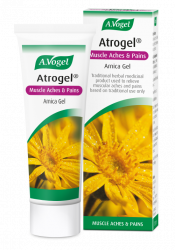Why should I exercise during menopause?

There are many great benefits to exercising during menopause:
Improves mood – as we exercise endorphins are released in the brain which can have a direct improvement on our mood. Exercise has been scientifically proven to help relieve stress by helping to burn up excessive levels of our stress hormone cortisol. Due to fluctuating hormone levels that occur during the menopause we can experience a range of symptoms linked to our mood including: depression, anxiety, low mood, mood swings and stress.
Strengthens your muscles – being physically active helps to strengthen your muscles which is extremely important as we get older. We usually achieve our peak muscle mass during our late 30s and early 40s after which a gradual loss of muscle mass begins to occur and continues to decline as we age. Exercising on a regular basis will help to prevent this process improving both muscle quality and quantity.
Keeps your joints mobile – keeping active can help to keep our joints mobile and prevent stiffness and lack of flexibility from taking hold. During the menopause falling oestrogen levels can affect bone density which can cause joint pain and lead to osteoporosis over time. This is why it’s extremely important to keep your joints healthy and strong, particularly during this time.
Helps to keep excess weight at bay – although menopause does not directly cause weight gain, falling levels of oestrogen can change how and where we store fat. What’s more as we get older our rate of metabolism drops meaning that we can’t burn through calories in the same way that we once did. Exercising will help to keep those extra pounds at bay as well as help to maintain tone in the muscles throughout the body.
Help to manage the severity and frequency of your symptoms – according to research even light intensity exercise such as gentle stretching is enough to reduce menopausal and depressive symptoms.1 According to another study published in the Journal of Physiology exercise can help to reduce the number and intensity of hot flushes. This study found that exercise reduced artery pressure and blood flow to the brain which is thought to be a contributing factor to reducing the severity of hot flushes.2
Can improve your sleep – as well as improving your mood, energy levels, and severity of symptoms exercise can also help to improve your sleep in the menopause. As explored in our blog ‘Do you sleep better when you exercise?’ moderate aerobic exercise can have a positive impact on our sleep. What’s more it can help us to burn out excess energy and to settle down for a better night’s rest when we are in a state of hyper-arousal such as when we are stressed or suffer from insomnia.
So we've taken a little look at the benefits of exercising during menopause now let's explore some top tips on how you should exercise during this sensitive time...
Ditch that: Pushing your body the same way you did pre-menopause

Your body is changing, this isn’t a bad thing, but it means that the way you kept active in your 20s and 30s probably isn’t going to work so well during the menopause. As our Menopause Expert Eileen discusses in her blog ‘Less really is more when it comes to exercise’ a little sure can go a long way.
Pushing yourself beyond your body’s limits will leave you feeling more exhausted and, honestly, you won’t enjoy it very much and will end up resenting it every time you do it. Not to mention you’ll also be more prone to injury if you ignore your body’s signals, particularly as falling levels of oestrogen mean that your muscles and joints won’t have as much protection as they used to.
Do this: Take it easy and be aware of your body
However, that’s not to say that you shouldn’t exercise at all! As I have mentioned above regular exercise has a range of important benefits and could even help you out with the array of symptoms that menopause can cause. It’s important to know and understand what your symptoms are so that you can look after your body and adjust how you keep active if need be.
When it comes to exercising during menopause often gentle, low intensity, or moderate aerobic exercises are best. These take less out of the body than high intensity and hard-hitting exercises. Even walking can have beneficial effects on menopause!
Ditch that: I’m too tired so I won’t bother

Hormonal changes that take place during menopause use up a lot of our body’s energy and often leave us feeling fatigued and not up to exercising for as long (or at all) as we used to. When we feel exhausted it’s difficult to find the motivation to even think about exercise let alone do it, however overcoming this hurdle will do wonders for your symptoms and for preventing weight gain.
Although exercise may seem counterproductive to our energy levels research carried out by the University of Georgia found that both low and high intensity exercise could increase energy levels and significantly reduce feelings of fatigue. The study found that higher intensity exercise could reduce fatigue symptoms by up to a whopping 65%!3 Read more about how exercise can help you overcome menopausal fatigue here.
Do this: Exercise smart
If your energy levels are waning take this into account when it comes to exercise – rather than take part in an aerobic form of exercise switch to something less physically exerting such as gentle stretching. Alternatively, you can also exercise for less time if you don’t feel up to exercising for your usual length of time.
It is important to recognise and differentiate between when we are too physically exhausted and when we simply can’t be bothered – motivation is key here! So it can be handy to set an intention or a goal or reason to remind yourself why you should continue to exercise even when some days you really don’t feel as though you want to.
Our handy Balance Mineral Drink can also be taken before or after exercising to help with fatigue. As well as having a fresh strawberry taste, the minerals present in this drink were chosen especially for their fatigue-fighting properties. This drink can also replace any electrolytes that we lose through our sweat.
Ditch that: I don’t have time

Making time for exercise to be one of your priorities is often easier said than done, particularly as we all have prior commitments and responsibilities that need to come first before we think about exercise. That being said if you don’t take a little time out to focus on it don’t be surprised if you experience heightened menopause symptoms such as hot flushes and joint pain.
Do this: Don’t fit round exercise – make exercise fit around you
As we’ve discussed exercise is a great way to look after your health (particularly during this sensitive time) the hardest part is starting! When you lead hectic, busy and stressful lives, as many of us do, packing in a full hour of exercise numerous times a week can be challenging – or near impossible – so don’t try to do it all in one go!
A few short bursts of exercise throughout the day can add up – and it often doesn’t feel like exercising at all if you take this approach! For example try taking the stairs instead of the lift, park further away from your destination so that you have to walk a little further to get there, try some simple leg exercises that you can do from your desk.
If time is an important restrictive factor for you, pick a workout that you can do almost anywhere. Not everyone has easy access to a swimming pool, gym, or workout class, throw in a busy lifestyle on top of that and keeping up an active lifestyle becomes tricky. Finding a workout that is quick and easy to do will help you to build a routine and manage your time more productively.
Exercising at home is a good alternative for those of you who simply don’t have the time to get to a gym or a class. You don’t necessarily need equipment to exercise, why not explore our menopause exercise videos for some quick and easy exercises to try? For everything you need to know about exercise and time management check out my blog ‘10 top tips on staying fit when you’re super busy.’
Ditch that: Only taking part in cardio exercise

If you already exercise regularly, that’s great! However take note, if you only do cardio exercise your body might not be thanking you! Cardio is great for building up stamina and endurance however, during menopause we often need more than this. As we age we lose muscle mass in a gradual and natural process, which means that, if we don’t continually work on strength, we will lose it.
Do this: Mix it up!
Now, I’m definitely not saying you should give up cardio – particularly if you enjoy it – however mixing it up gives us more benefits in the long run. What’s more, if you work on strength and flexibility you will most likely see improvements in your cardio too! This will prevent any muscular imbalances from occurring and will also help to protect your body from deterioration and injury.
Ditch that: Warm-up? What warm-up?

You may have got away without warming up before exercising in your 20s however, during the menopause it’s unlikely that you’ll continue to do this without it causing some issues. During this time our levels of oestrogen drop which, in turn, can result in some changes to our muscles and joints. Oestrogen plays an important part in regulating our fluid levels meaning that joint pain can arise as levels of this hormone drop.
Our joints are kept lubricated by synovial fluid which helps to prevent stiffness and inflammation. Leading a sedentary lifestyle, not exercising and dehydration are big risk factors that can affect the production and circulation of this important fluid. Therefore, warming up the body before exercising is crucial in helping to protect your joints from harm regardless of whether you are going through the menopause or not!
Do this: ALWAYS warm-up first!
Luckily warming up the body is easy and relatively quick, check out some gentle stretches that you can try to warm up that will also help to benefit your menopause symptoms here. Alternatively, you can investigate our easy warm-up exercises for beginners which has easy-to-follow videos.
1 https://www.ncbi.nlm.nih.gov/pmc/articles/PMC4961267/
2 https://www.medicalnewstoday.com/articles/304295.php
3 https://well.blogs.nytimes.com/2008/02/29/the-cure-for-exhaustion-more-exercise/









